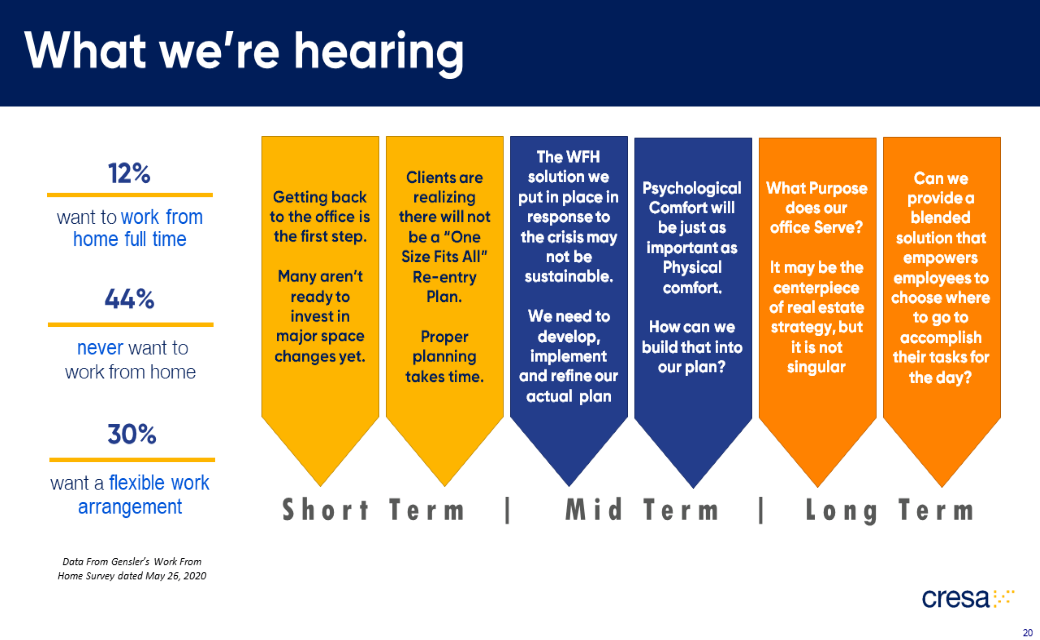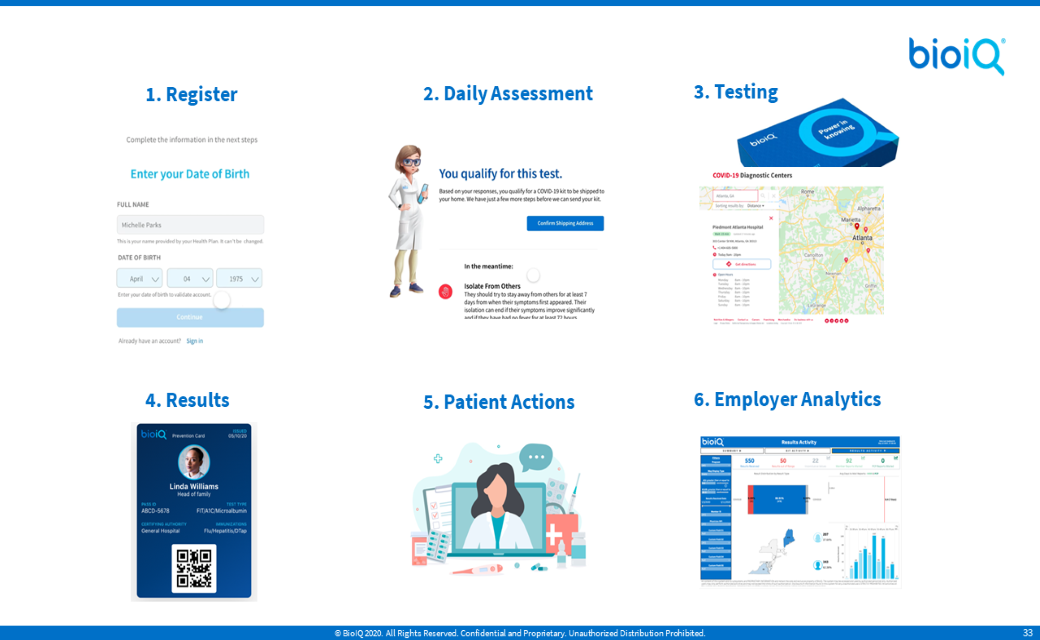Your return to work strategy can ensure the safety of your employees and customers through:
- Top Legal Considerations
- Workplace Utilization Best Practices
- Return-to-Work Clinical & Testing Protocols
Below we break down each of these topics to provide a foundation for a successful return to work strategy.
Top Legal Strategies | Michael Eckard | Ogletree Deakins
1. Temperature Screenings: Given that there is a declared pandemic, the EEOC has issued guidance stating that employers may ask questions about symptoms and may conduct temperature screenings. Make sure to consider what the state law restrictions are in the area where you have operations.
2. COVID-19 Testing: EEOC updated their guidelines stating it is also lawful for employers to administer viral tests to employees.
3. Legal Considerations for the Testing Process: Determine what your testing goals and strategies are to determine what type of test to facilitate.
- HIPAA Release: You should obtain a HIPAA release as part of your upfront enrollment and registration process.
- ADA Confidentiality Requirements: Under the ADA, medical records must remain confidential.
- ADA and Title VII Accommodations: If the restrictions around testing are due to a medical or disability issue, you may have a legal obligation to give an ADA accommodation just as you would for any other disability in your workplace.
- The Process: Engage in a conversation with the employee and explore the reason they need an accommodation, the type of accommodation they might need, and whether it’s a reasonable accommodation vs. an undue hardship to the company.
- Title VII: There may be some limited circumstances where an employee has a sincerely held religious belief that impacts their ability to comply with your testing program. Under Title VII, you can determine if it’s a situation you’re obligated to accommodate.
4. Compensability: The issue on whether you have to compensate employees for the time spent screening typically depends on where your operations are located.

At a state level, laws vary. Click here for a helpful 50 state survey that gives you highlights of these laws from state to state.
5. Handling Infected Employees: You’re likely to have an employee who gets infected with COVID-19. While maintaining ADA Confidentiality in this situation, you should:

Workplace Utilization Best Practices | Gillian Baikie & Brooks Morris | Cresa
1. The Return to Office (RTO) Process: You should prepare an adequate amount of time planning re-entry, looking at best practices and current guidelines, and considering your team and its culture.
2. Evaluate Your Space: Analyzing your space can inform your re-entry strategy and show areas to consider space modifications. Plans may include:
- Distancing analysis
- Check-in areas / isolation rooms
- Occupancy modeling
- Traffic flow patterns
- Areas of congestion
- Signage locations
- Sanitization station placement
Click here to view a sample Return to Office Space Plan developed by Cresa’s Workspace Planning, Design & Support Team.
3. Develop and Communicate Guidelines: Reassure your team that you have taken every precaution to ensure their health and wellness and that everyone must follow the protocols outlined within the guidelines. It’s important to not only communicate to employees ahead of re-entry, but also be sure to create opportunities for feedback. Insights gathered during this time may help shape future plans.
4. What We’re Hearing: There is still a need for the office. People want a place to meet, collaborate, and have mentorship.

5. Do You Know Your Landlord?: Having a relationship with your landlord and knowing what’s expected of them is critical, especially during this time. The types of landlords include:
- Sole Proprietor – “Mom and Pop”: Straight forward, easy going, and typically best suited for small businesses with simple needs.
- Family Office Investors: Stable tenants, best suited for small to large businesses, looking for a partner and a landlord who can accommodate their growth needs.
- Real Estate Developers: Develop properties that are usually Class A with a lot of amenities, high security, and are looking to generate the highest rents possible.
- Institutional Investors: Professionals at managing money, will usually invest in Class A or Class B buildings, and are interested in generating strong cash flow as well as achieving high rents.
6. What’s Most Important?: Start with hiring a professional real estate advisory firm, like Cresa, whose market knowledge and existing relationships can create leverage when communicating with landlords. Your advisor should identify the landlord’s expectations and make sure they have an achievable return to office plan set up.

Return- to-Work & Testing Protocols | Justin Bellante | BioIQ
1. Back to Work Framework: At the beginning of the pandemic, a basic clinical protocol was applied that combines:
- Symptom/Exposure Assessment
- Testing
- Contact Tracing and Notification
- Quarantine and Treatment
This protocol should be applied in varying degrees of intensity depending on the company. When working with employers to determine protocol intensity, BioIQ uses standard population health management tools, including:
- Population Segmentation
- Risk Stratification
- Targeted Protocol
When developing your re-entry timeline, consider the risk of various employee roles within the organization. How probable is transition within each office environment? What’s the mortality rate for that patient type?
There is no “one size fits all” approach.
2. Testing Goals: What type of testing should you apply during the testing component of the protocol? There are two types of tests you should consider:
- Diagnostic Testing: Lets you know if you have the virus. Typically tested from a nasal or throat swab or a saliva sample.
- IgM / IgG Antibody or Serology Testing: Let’s you know if you’ve had the virus or previously been exposed to it, and your body has registered an immune response. Typically tested from a blood sample.
These tests all have beneficial clinical uses and can be done in a variety of settings for a variety of purposes.
3. Managing the Process: BioIQ offers a daily online assessment for employee symptom screening where individuals can also tap into resources to guide them through the next steps in the testing process, through home test kits, a worksite event or at a local retail clinic. These resources help employees navigate and adhere to a protocol. They help employers track the protocol, determine who is able to safely return to the workplace, and track disease prevalence and recovery within the employee population.

COVID-19 has removed the majority of the workforce from the office. As companies and employees look to return, there are best practices that can be applied to help everyone feel prepared and safe. The expertise outlined in this white paper by Ogletree Deakins, Cresa, and BioIQ is invaluable as you create your company’s return to office strategy. Please reach out to Michael Eckard, Gillian Baikie, Brooks Morris, and/or Justin Bellante if you would like to discuss further.






